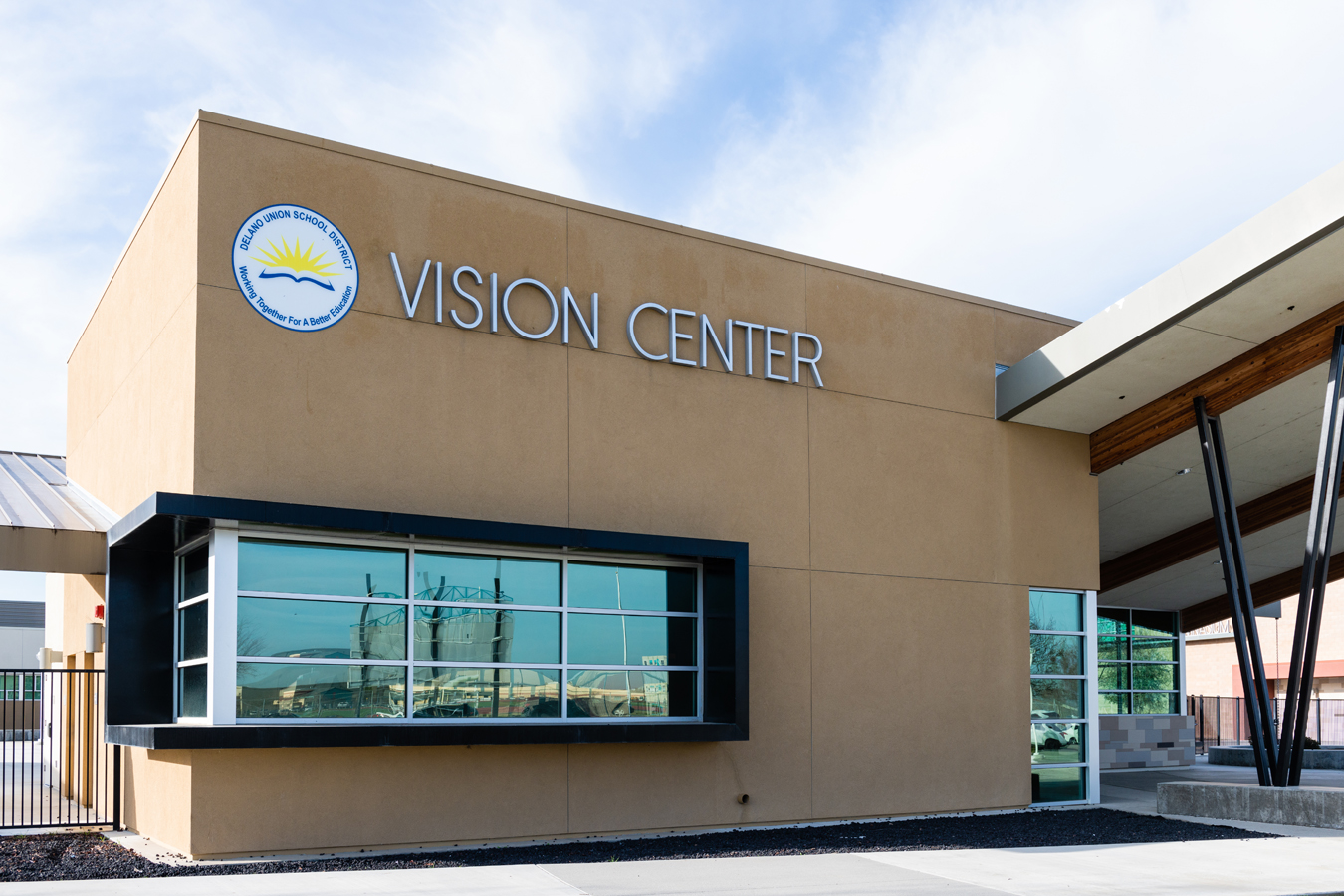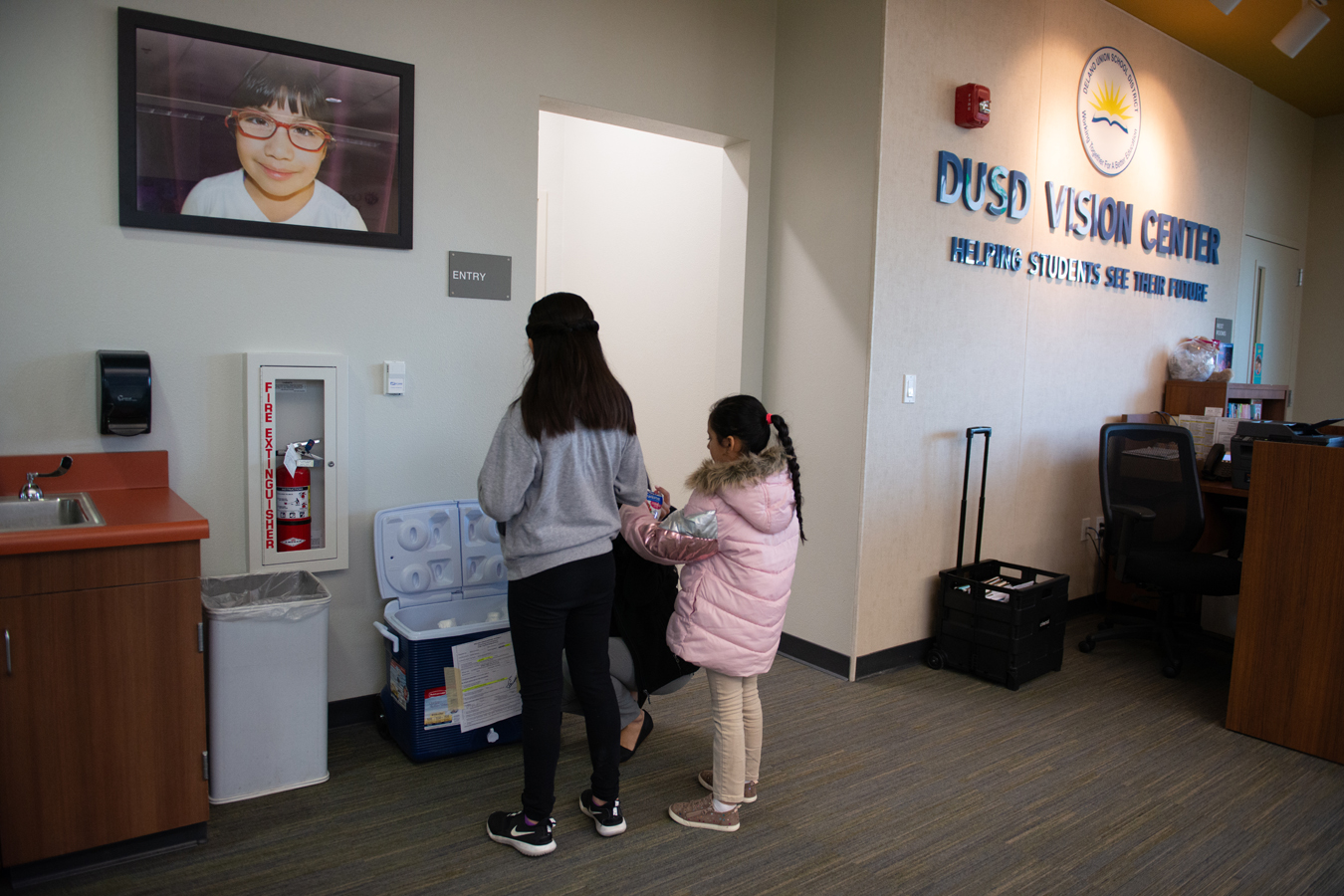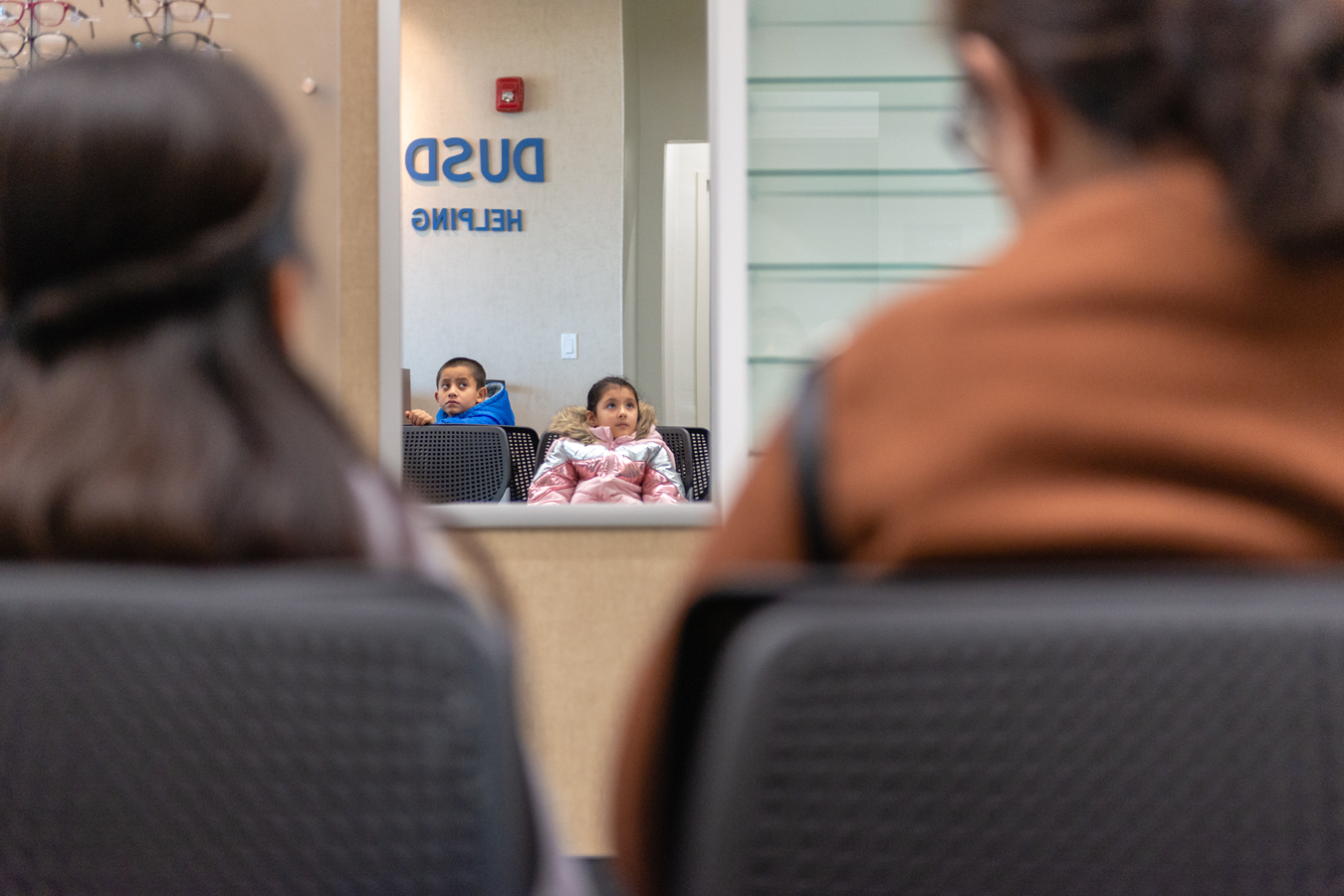DELANO, Calif. ŌĆö Daisy Leon struggles to sit still and read the letters on the eye chart. Her responses tumble out in a quiet, confused garble.
ŌĆ£You know your letters?ŌĆØ asks optometrist Jolly Mamauag-Camat. ŌĆ£Umm, ya,ŌĆØ says Daisy, almost inaudibly.
The 6-year-old kindergartner had her eyes examined for the first time on a recent Thursday morning. Although she hadnŌĆÖt complained about headaches or blurry vision, her grandmother noticed sheŌĆÖd been inching closer to watch television.
After DaisyŌĆÖs failed attempts at reading the eye chart, Mamauag-Camat inspects the little girlŌĆÖs eyes through a phoropter and writes her a prescription for glasses.
At least of school-age children in the U.S. have vision problems. But according to the , fewer than 15% of children get an eye exam before entering kindergarten. Because vision problems tend to worsen the longer they go undetected, many children suffer even though there are often simple, relatively inexpensive solutions such as prescription glasses.
plus the District of Columbia require screenings or exams for preschoolers, according to the National Center for ChildrenŌĆÖs Vision & Eye Health. But California has no such requirement, said , an assistant professor of research ophthalmology at . California does require them for older children.
ŌĆ£The system in California is not as good as it can be,ŌĆØ Jiang said.
In much of CaliforniaŌĆÖs Central Valley, where roughly people live in poverty, two school districts are working with two nonprofits, the and , to provide vision care to Kern CountyŌĆÖs underserved and uninsured children.
Many of the neediest are the children of farmworkers.
ŌĆ£We are an agriculture-based community,ŌĆØ said Linda Hinojosa, coordinator of health services for the Delano Union School District. ŌĆ£Most of our families harvest table grapes 12 hours a day, with very limited time to take their children in for an eye exam.ŌĆØ
The program, funded by the nonprofits and the school districts, operates five school-based clinics in Bakersfield and Delano. Students receive comprehensive eye exams and glasses, along with free transportation. And breakfast.
Most of the children who visit the clinics have coverage through Medi-Cal, CaliforniaŌĆÖs Medicaid program for low-income people. There is no out-of-pocket cost for the eye exams and glasses for them, or for children who are uninsured, said Alexander Zahn, chief business development officer for the Advanced Center for Eyecare.
Almost examined need glasses.
ŌĆ£The need was very apparentŌĆØ in the Central Valley, Zahn said. ŌĆ£Sixty dollars for an eye exam and $80 for glasses might be the difference between eating dinner a couple days a week.ŌĆØ
Daisy was among 12 students who were bused to the Delano Union School District Vision Center, adjacent to , an elementary school with about 1,000 students. Almost all the students at Pioneer are Hispanic and about qualify for free or reduced-price lunches.
Students from throughout the Delano Union School District visit the clinic. Since it opened in 2018, the clinic has performed 961 eye exams and prescribed 517 pairs of glasses.
For Daisy, whose parents are farmworkers, the clinic has been a tremendous help.
ŌĆ£They prune out in the fields,ŌĆØ said Guadalupe Leon, DaisyŌĆÖs grandmother. ŌĆ£They canŌĆÖt afford to take days off.ŌĆØ

The Delano Union School District Vision Center is funded by multiple sources: OneSight, a nonprofit organization dedicated to increasing access to vision care in underserved communities around the world, donated the ophthalmic equipment and provided grant funding for the first year of operation. The Advanced Center for Eyecare provides staff and supplies. And the school district provides the facility, furnishings and transportation. (Heidi de Marco/KHN)

Twelve students from Nueva Vista Language Academy and Fremont Elementary School arrive by bus for their eye exams and follow-ups. Linda Hinojosa, a registered nurse for 20 years, says lack of transportation is a major barrier to vision care. ŌĆ£Parents a lot of times donŌĆÖt have a car, or it can be a one-vehicle family,ŌĆØ she says. (Heidi de Marco/KHN)

Students are offered breakfast before their appointments with optometrist Jolly Mamauag-Camat. About three-quarters of students in the district are eligible for free/reduced-price meals. (Heidi de Marco/KHN)

Daisy Leon, a kindergartner at Nueva Vista Language Academy, takes a test to check for color blindness. Before beginning, the optical technician asks Daisy if she understands English. Because of the regionŌĆÖs large Spanish-speaking population, clinic staff members often act as interpreters. (Heidi de Marco/KHN)

Daisy looks into an auto refractor as part of her eye exam. (Heidi de Marco/KHN)

Daisy and Jonathon Castro watch a movie as they wait for their eyes to dilate. This is the first eye exam for both of them. (Heidi de Marco/KHN)

Daisy sits on her knees to see through a phoropter, a device to help determine eyeglass prescriptions. Mamauag-Camat says children often canŌĆÖt tell if they have vision problems because they donŌĆÖt know any differently. ŌĆ£They can fall through the cracks,ŌĆØ she says. “They donŌĆÖt know the difference between whatŌĆÖs clear and not clear.ŌĆØ (Heidi de Marco/KHN)

About 45% of Kern CountyŌĆÖs population is on Medi-Cal. Medi-Cal covers vision care, including an eye exam and glasses every two years, but in communities like Delano, access is a problem. ŌĆ£We live in an area with a big shortage of providers, particularly specialty care providers like optometrists and ophthalmologists,ŌĆØ says Alexander Zahn, of the Advanced Center for Eyecare. (Heidi de Marco/KHN)

Daisy picks out glasses right after her exam, a pink pair that she had been admiring all morning. ŌĆ£We need to go where students are,ŌĆØ says Hinojosa. ŌĆ£Vision is absolutely vital.ŌĆØ (Heidi de Marco/KHN)
This story was produced by┬Ā, which publishes┬Ā, an editorially independent service of the┬Ā.







